PRESENTATION: Simphiwe Mbunyuza-INTLOMBE
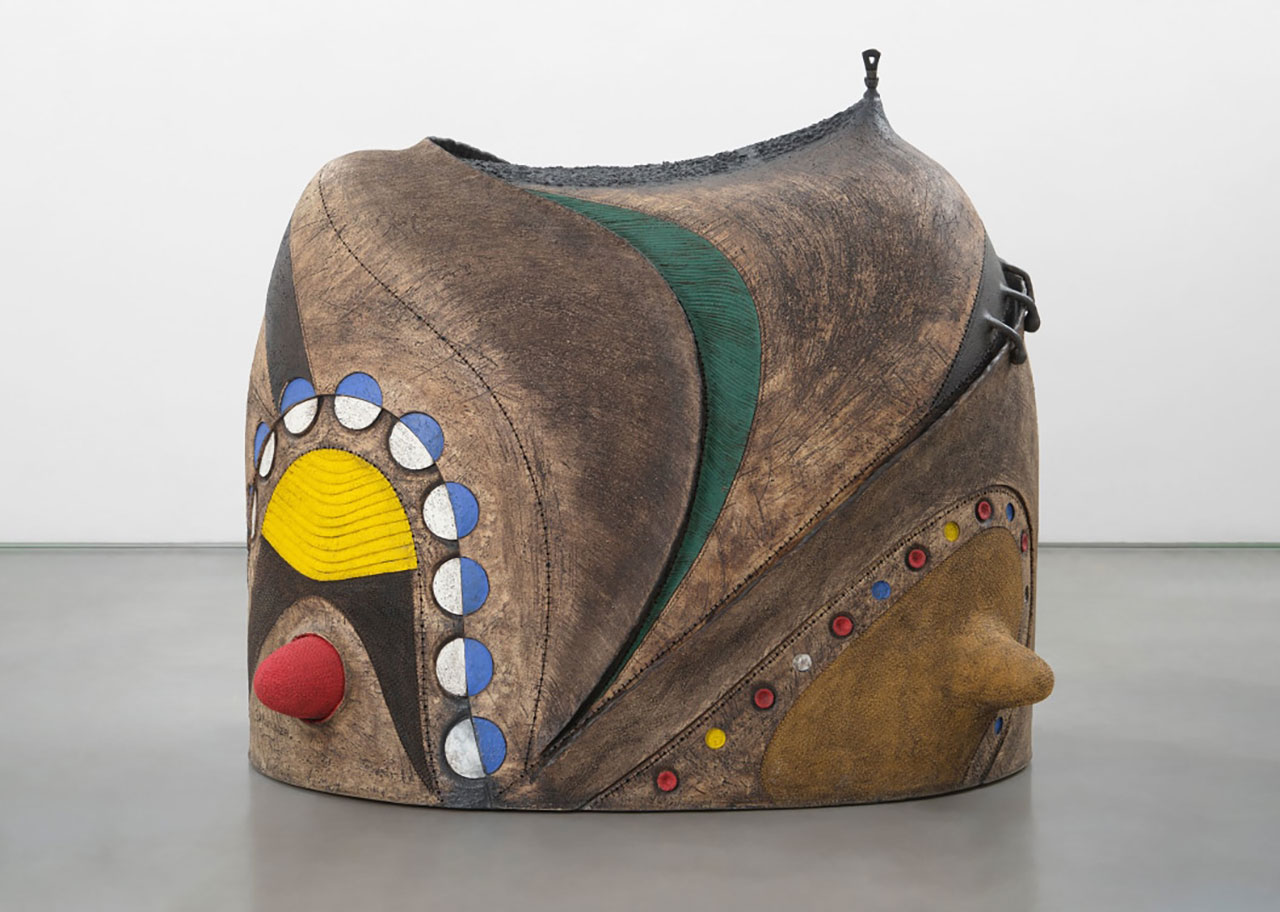 Simphiwe Mbunyuza creates masterful objects and vessels combining stoneware, leather, fabric and steel. Mbunyuza’s richly textured, confounding ceramic objects are featured traditional African iconography and cultural symbols. Furthermore, to produce his work Mbunyuza uses a coiling technique that has been employed by the Xhosa* people for centuries.Elegant and graphic, Mbunyuza’s forms and colors unify in his
Simphiwe Mbunyuza creates masterful objects and vessels combining stoneware, leather, fabric and steel. Mbunyuza’s richly textured, confounding ceramic objects are featured traditional African iconography and cultural symbols. Furthermore, to produce his work Mbunyuza uses a coiling technique that has been employed by the Xhosa* people for centuries.Elegant and graphic, Mbunyuza’s forms and colors unify in his
extraordinarily distinct ceramic objects.
By Dimitris Lempesis
Photo: David Kordansky Gallery Archive
Simphiwe Mbunyuza creates large-scale figural sculptures and objects that document and honor the rituals and land associated with his native people. “INTLOMBE” the title of his solo exhibition recalls an Intlombe gathering in which divine healers come together in a home for a variety of causes, from social to spiritual. These gatherings often incorporate dancing, singing, and playing drums as a way of invoking the Xhosa ancestors. As a grouping, the works on view connect the artist back to his home through the use of referential forms, color, material, and installation. Each vessel and sculpture is richly decorated with distinct textural and illustrative markings that depict regional iconography from line drawings of homes to rippled grasses as seen from an aerial perspective. The works are notable for the delineated bands of color and pattern, which Mbunyuza achieves through a combination of repetitive mark-making and the use of oxide washes to enhance the surface texture and create distinct yellows, oranges, greens, and blues. The oxide wash also mimics the appearance of imbhola which are botanically produced pigments the Xhosa women apply to their faces, further emphasizing the works’ connection to the earth. In “STULO SIKA PITI” (2023), whose overall tone is muted and almost mud-like, the artist introduces vivid colors through the incorporation of a series of bisected white and blue circles, arched to mimic the phases of the moon or agricultural plots as seen from above. While the overall texture appears rough to the touch, it’s punctuated by rhythmic seams with line-work so precise it can appear stitched. The artist sometimes incorporates other materials into the stonewear such as leather, metal, or wood. In instances like “STULO SIKA PITI”, where the foreign materials aren’t present in the end product, tools like barbed wire are pressed into the surface to create these seam-like patterns. Through these combined elements and the artist’s preference toward installing the works directly on the gallery floor, the sculptures often appear equal-parts ancient yet personal and site-specific yet otherworldly. Mbunyuza utilizes every bit of the sculptures’ surface to recreate cultural scenes, mimic landscapes, and add appendages that represent animal, human, or decorative flourishes. In particular, the artist tends toward representing the female form, through the incorporation of breast or nipple-like elements, but also by taking inspiration from tools like Imbhokodo, which is an oval-shaped rock that is used predominantly by Xhosa women to grind corn. The artist often reflects on the role women play in the village both as mothers, but also as the primary caregivers in the community, and—most importantly—as symbols of strength and power. In “YEMYEM” (2023), the totemic form appears dressed in ceremonial garb. Like Mbunyuza’s other works, the vertical figure is sectioned by a series of swooped or jagged lines. When viewed from one side, the top section of the figure appears clothed with a plunging neckline. Resting just above the hips, a decorated pattern of bone-like extensions is set against a ribbon-shaped backing, taking the appearance of ceremonial dress. “ICAMAGU’LIVUMILE” (2024), one of the largest works on view, exemplifies Mbunyuza’s continued preoccupation with clay as a material, the coiling method, and the—seemingly endless—ways in which the juxtaposition of these repeated shapes, icons, and grooved patterns can tell a story. In the same way these quadrants meet, each work itself acts as a point of connection between the artist and his ancestry. Even Mbunyuza’s use of clay as his preferred medium stems from a long history with the material. From the time he was a young boy, the artist would go to the riverbanks and dig up clay and shape it into chickens, cows, or other familiar forms. Although the artist works from a specific stylistic vocabulary, he continues to push the material and compositions to explore his subject matter to its fullest extent. What Mbunyuza is able to achieve with the material goes beyond pottery into other material, aesthetic, and poetic possibilities.
*The Xhosa people are a Bantu ethnic group native to South Africa. They are the second largest ethnic group in South Africa a. Presently, over nine million Xhosa-speaking people are distributed across Southern Africa, although their traditional homeland is primarily the Eastern Cape province of South Africa. Their language is one of South Africa’s most populous languages.
Photo: Simphiwe Mbunyuza, STULO SIKA PITI, 2023, Ceramic, 49 x 54 x 36 inches (124.5 x 137.2 x 91.4 cm), © Simphiwe Mbunyuza, Courtesy the artist and David Kordansky Gallery
Info: David Kordansky Gallery, 5130 W. Edgewood Pl., Los Angeles, CA, USA, Duration: 2/7-24/8/2024, Days & Hours: Tue-Sat 10:00-18:00, www.davidkordanskygallery.com/
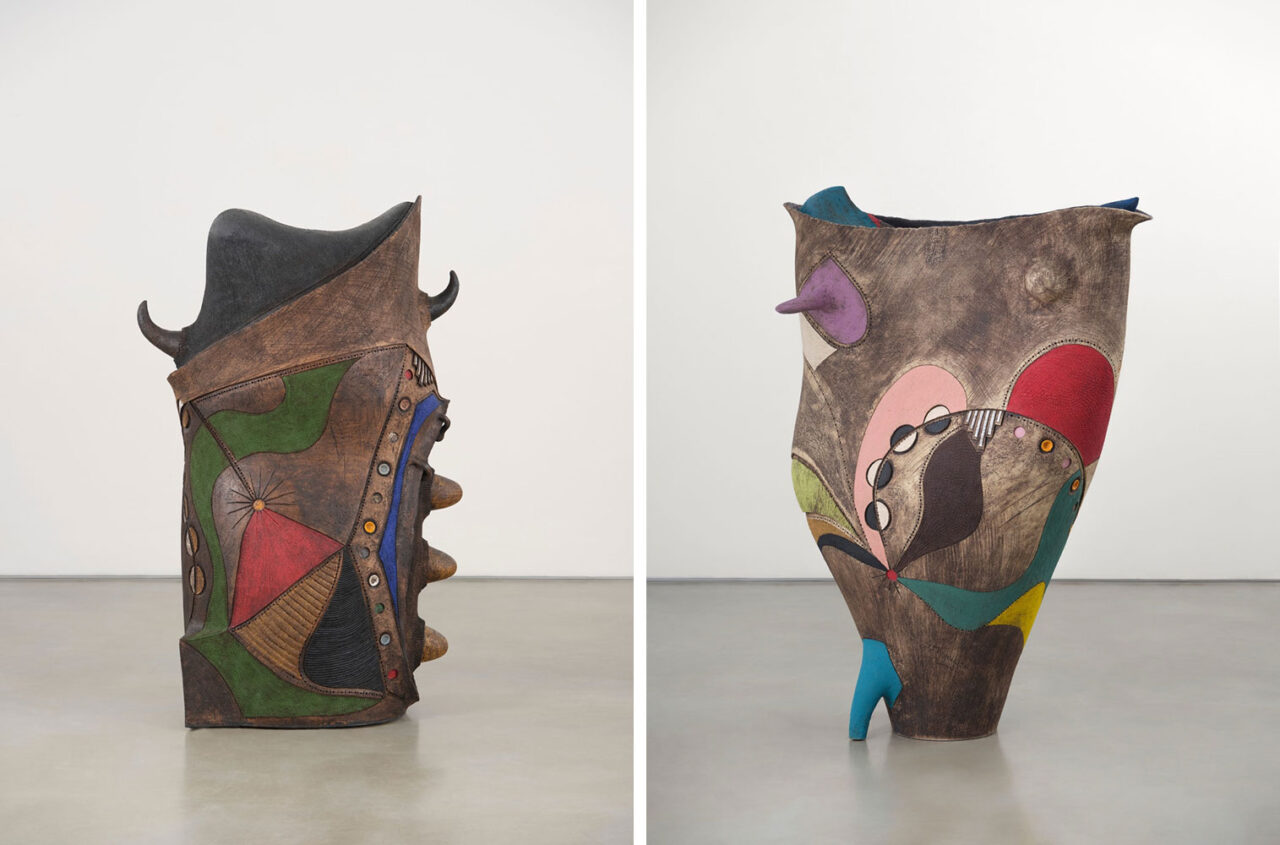
Right: Simphiwe Mbunyuza, INGOBOZI, 2023, Ceramic, 62 x 45 x 25 3/4 inches (157.5 x 114.3 x 65.4 cm), © Simphiwe Mbunyuza, Courtesy the artist and David Kordansky Gallery
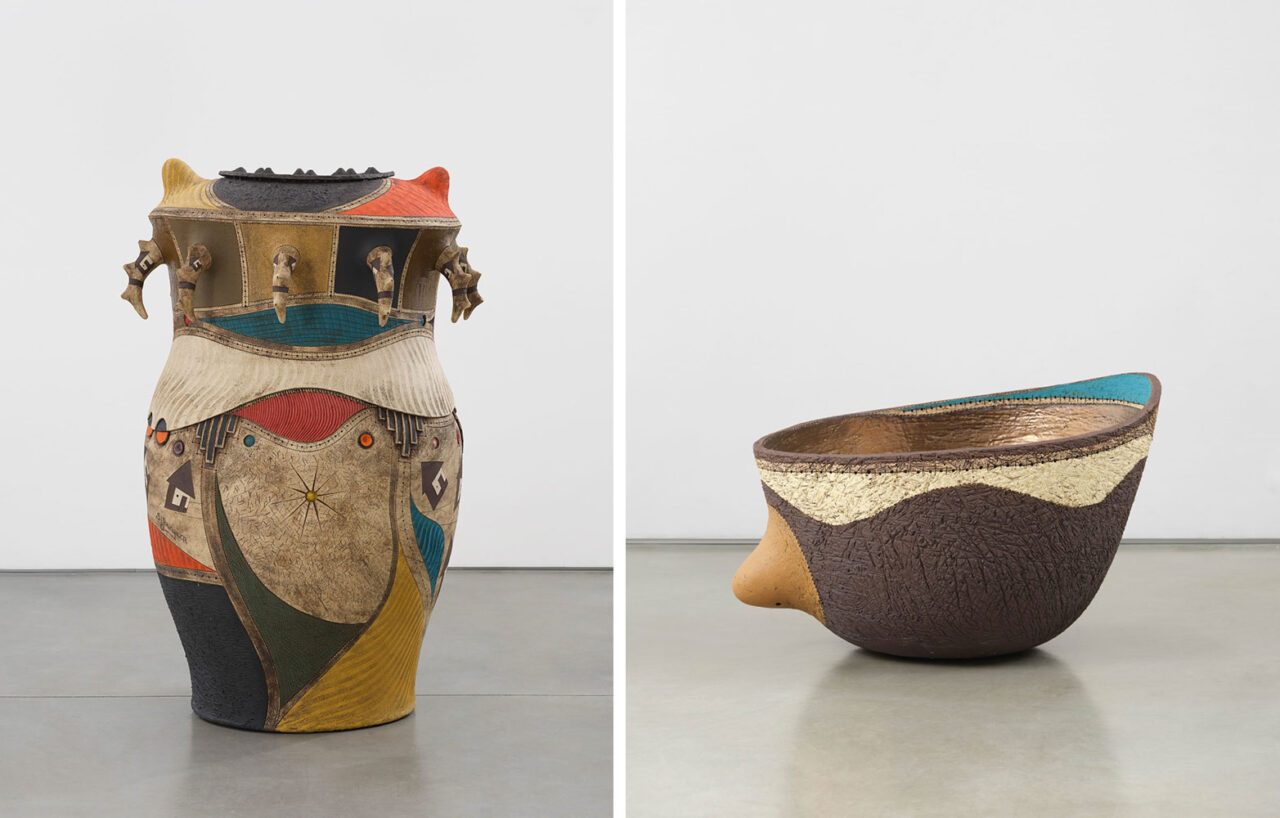
Right: Simphiwe Mbunyuza, ICEBA, 2023, Ceramic, 18 x 28 x 23 1/4 inches (45.7 x 71.1 x 59.1 cm), © Simphiwe Mbunyuza, Courtesy the artist and David Kordansky Gallery
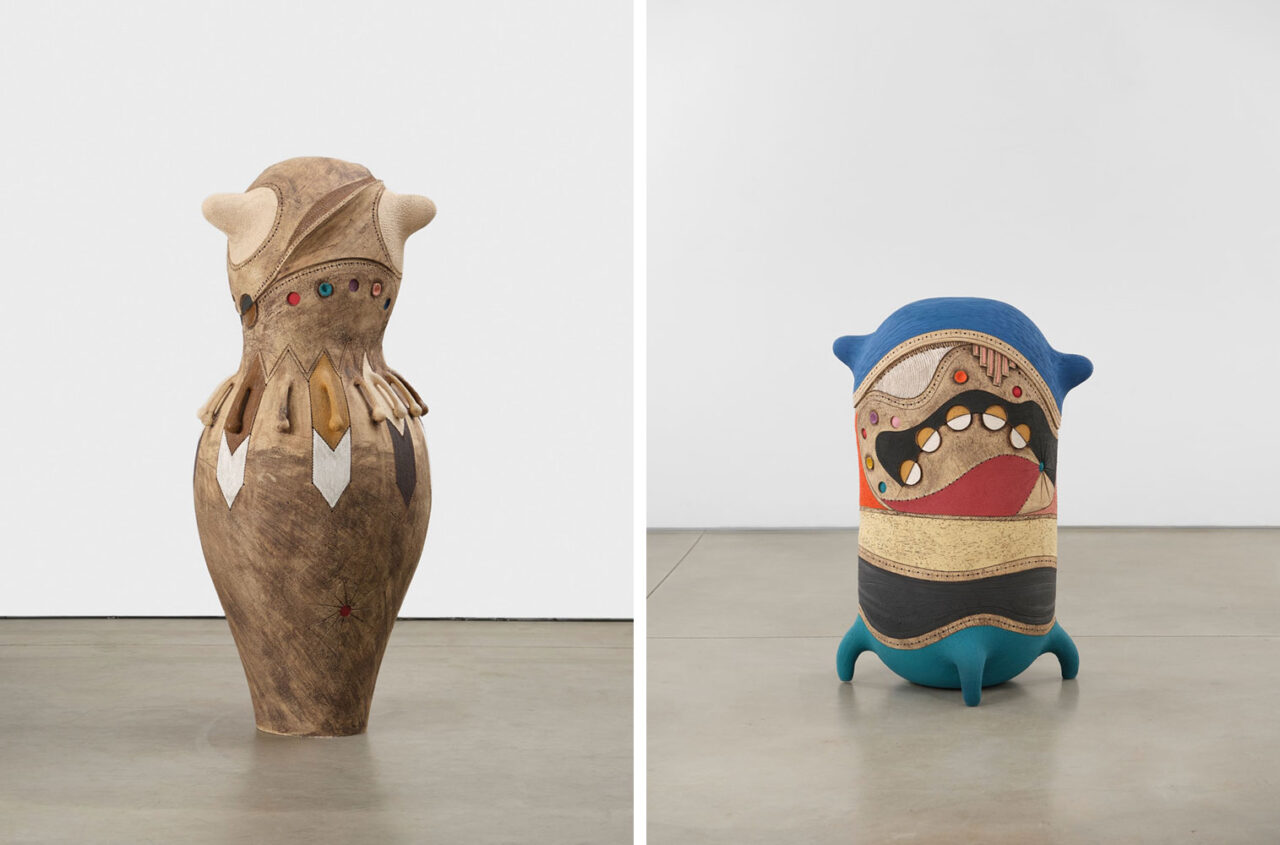
Right: Simphiwe Mbunyuza, MZOMKHULU, 2024, Ceramic, 42 1/2 x 28 1/2 x 26 1/2 inches (108 x 72.4 x 67.3 cm), © Simphiwe Mbunyuza, Courtesy the artist and David Kordansky Gallery
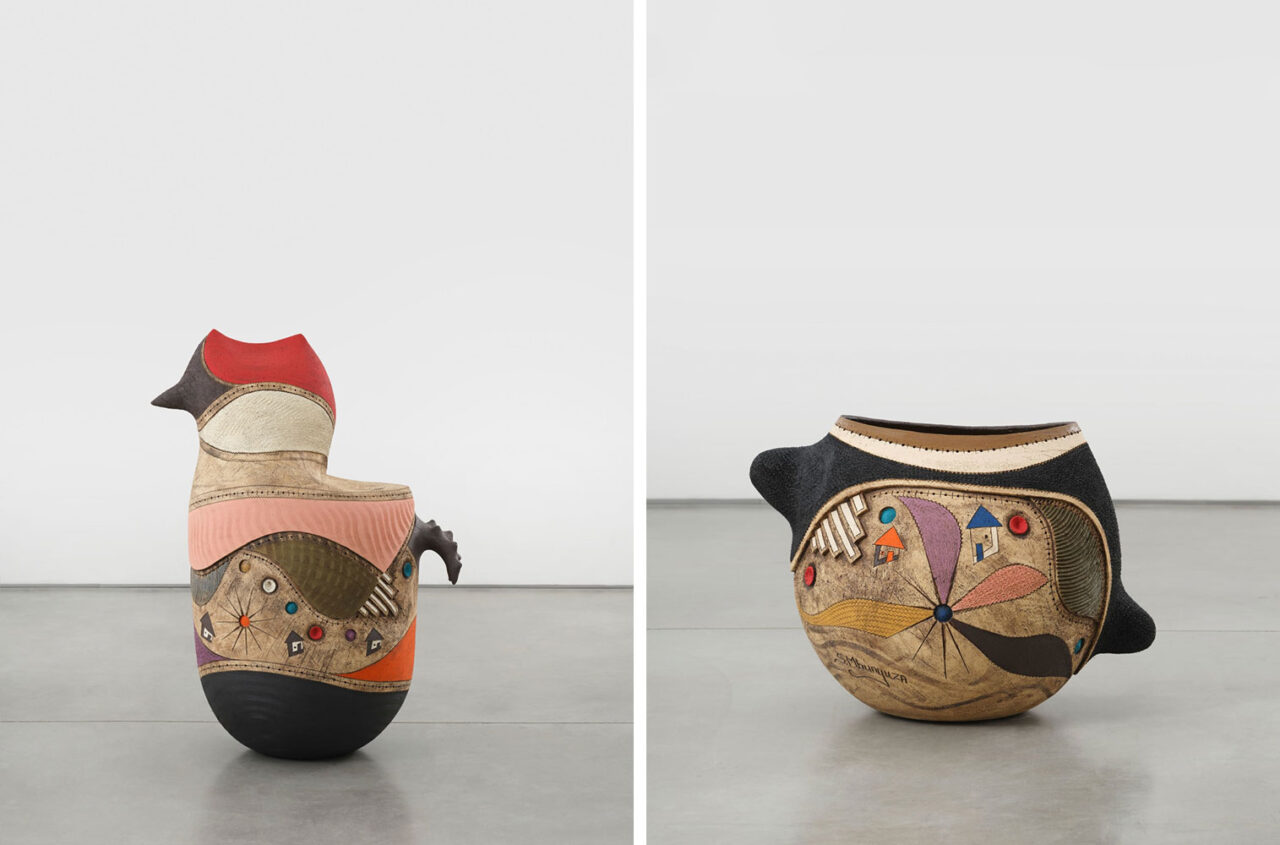
Right: Simphiwe Mbunyuza, HAMBA BHEKILE, 2023m Ceramic, 20 1/2 x 27 x 20 inches (52.1 x 68.6 x 50.8 cm), © Simphiwe Mbunyuza, Courtesy the artist and David Kordansky Gallery
